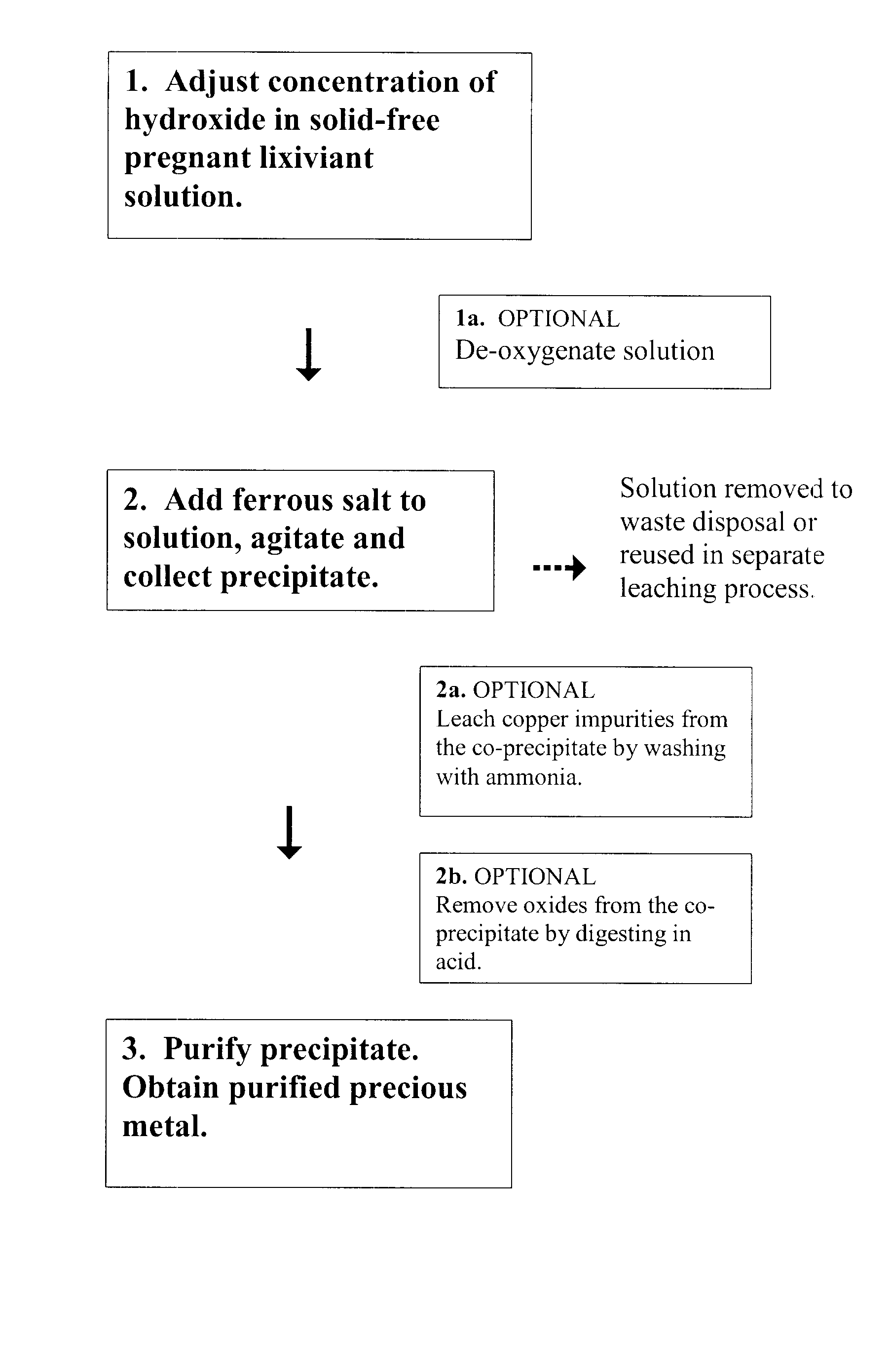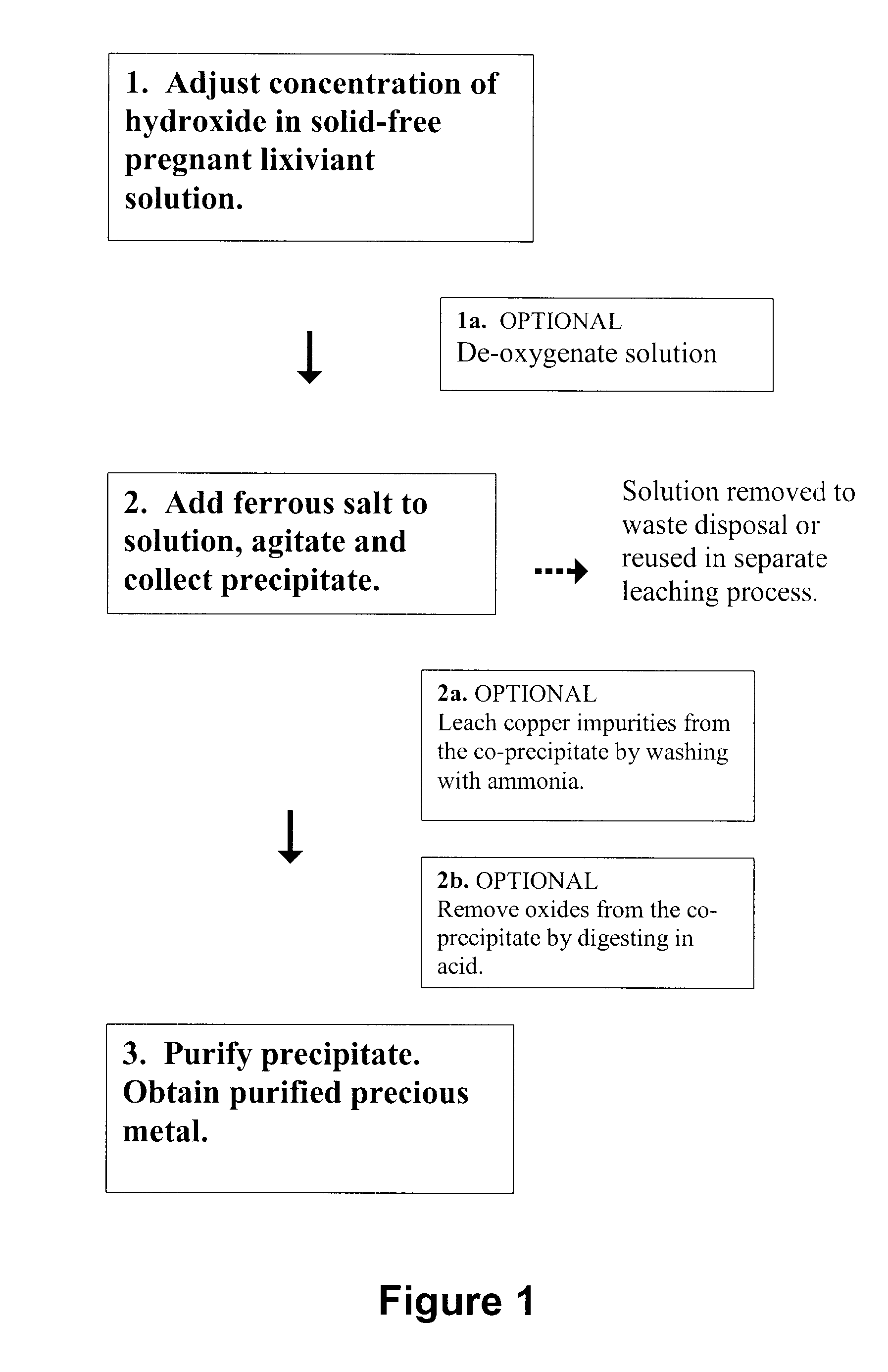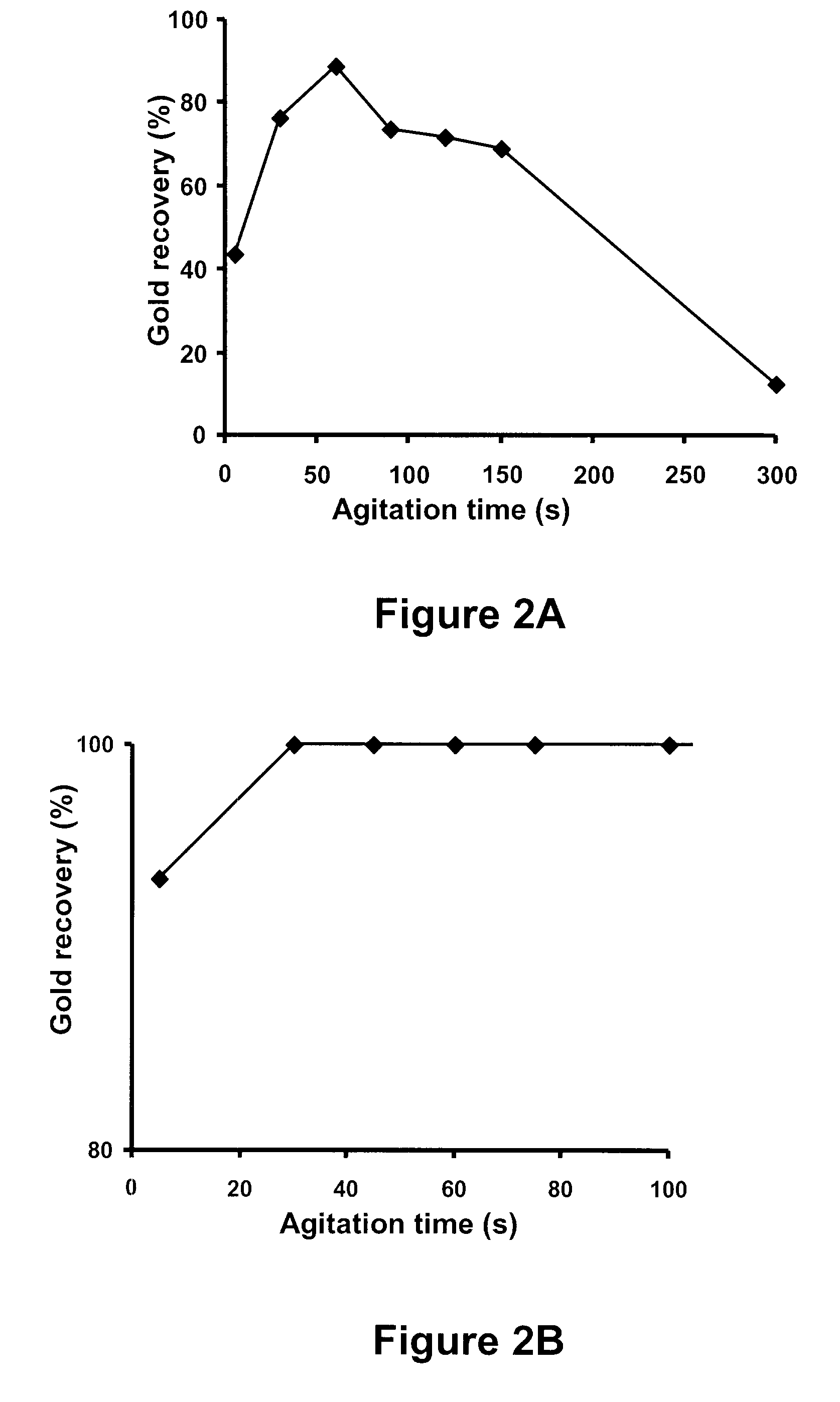Precious metal recovery from solution
a technology of precious metals and solutions, applied in the field of precious metal recovery from aqueous solutions, can solve the problems of high toxic compound cyanide, high cost of process using cyanide, and destroying local livestock and people, and achieves the effects of low reagent cost, easy separation from solution, and consistency of solids
- Summary
- Abstract
- Description
- Claims
- Application Information
AI Technical Summary
Benefits of technology
Problems solved by technology
Method used
Image
Examples
working examples
[0075]It is important to point out that the invention is easily optimized to provide 100% precious metal recovery. Therefore, in certain studies set forth below, the inventor deliberately began with non-optimized conditions to test effects of different variables. That is, 100% recovery cannot be compared to 100% recovery.
example 1
Filtration Apparatus
[0076]The filtration apparatus used throughout the examples was a vacuum filtration apparatus that had a suspension-receiving portion, a filtering portion, and a filtrate collection portion.
[0077]The suspension-receiving portion was a hollow glass cylinder with an open top face and an open bottom face. The suspension-receiving portion was adapted to be held by a clamp. When clamped, the bottom face was closed off by the filtering portion.
[0078]The filtering portion was a tapered glass cone with a larger diameter top end that was continuously attached to a circular metal screen of the same diameter and an open smaller diameter bottom end. The filtering portion was adapted to be clamped to the suspension-receiving portion.
[0079]Prior to clamping the suspension-receiving portion to the filtering portion, a circular piece of filter paper, having the same or larger diameter as the metal screen, was placed on the screen between the clamped portions.
[0080]A stainless st...
example 2
Preparation of Solutions
2A. Leachate
[0083]Leachate was prepared using municipally supplied water from the city of Kingston, Ontario, Canada. The water was not further purified by distillation or deionization. Ammonium thiosulfate ((NH4)2S2O3, 99% pure) and copper sulfate (CuSO4.5H2O, 98% pure) were purchased from Aldrich Chemical Company (Oakville, Ontario, Canada); ammonia (NH3, 28%-30% in water) was purchased from Fisher Scientific (Ottawa, Ontario, Canada); all were used without further purification. The leachate was made to be 0.2 mol / L ammonium thiosulfate, 0.9 mol / L ammonia, and 300 mg / L copper sulfate. The leachate appeared as a pale blue transparent solution.
2B. Thiosulfate Solutions
[0084]Thiosulfate solutions were prepared for use in the preparation of pregnant solutions of Example 4B. The concentrations of thiosulfate and other components in these solutions were less concentrated than those of the leachate of Example 2A, and so they were stable and suitable for storing.
[00...
PUM
| Property | Measurement | Unit |
|---|---|---|
| pH | aaaaa | aaaaa |
| pH | aaaaa | aaaaa |
| pH | aaaaa | aaaaa |
Abstract
Description
Claims
Application Information
 Login to View More
Login to View More - R&D
- Intellectual Property
- Life Sciences
- Materials
- Tech Scout
- Unparalleled Data Quality
- Higher Quality Content
- 60% Fewer Hallucinations
Browse by: Latest US Patents, China's latest patents, Technical Efficacy Thesaurus, Application Domain, Technology Topic, Popular Technical Reports.
© 2025 PatSnap. All rights reserved.Legal|Privacy policy|Modern Slavery Act Transparency Statement|Sitemap|About US| Contact US: help@patsnap.com



